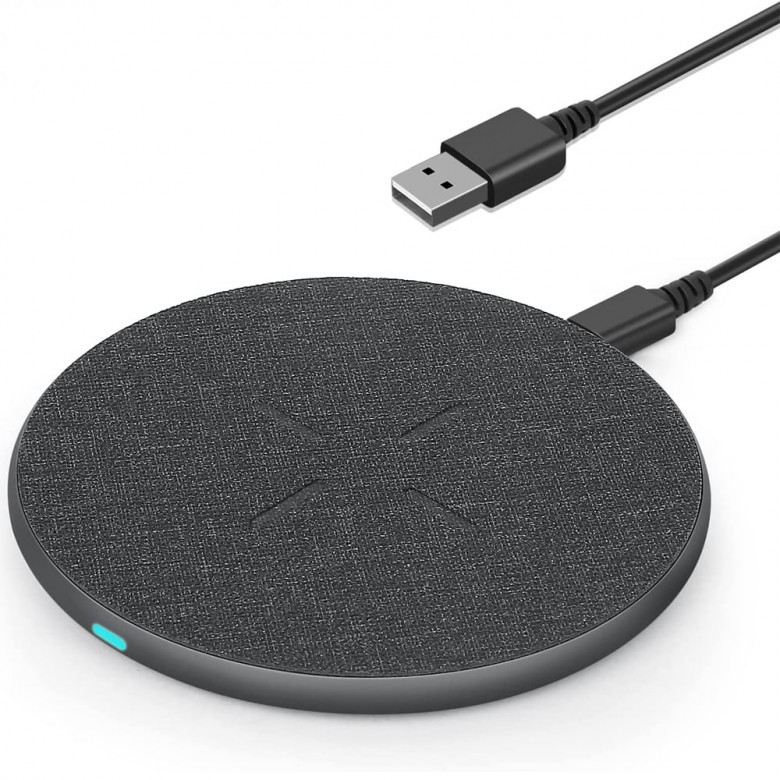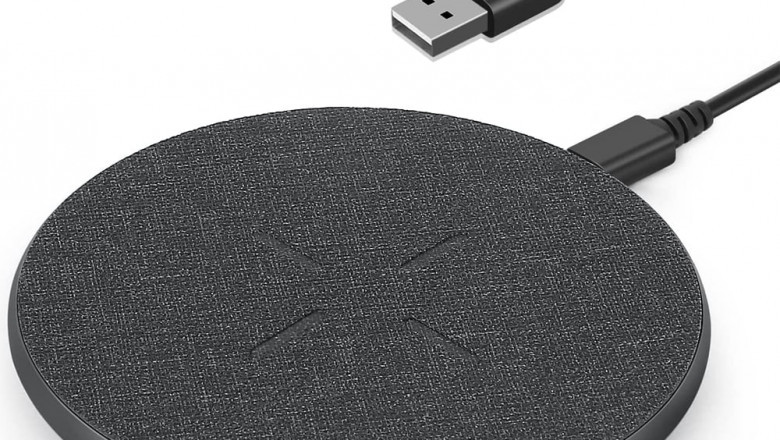views

Introduction:
The healthcare landscape in Canada is constantly evolving, embracing innovations that enhance efficiency, hygiene, and patient care. Among these advancements, induction charging, also known as wireless charging, is emerging as a transformative technology with the potential to revolutionize how medical devices, mobile workstations, and even patient wearables are powered. This article delves into the burgeoning Canada Induction Charger Market within healthcare settings, exploring its benefits, current applications, challenges, and future trajectory. Discover how this cable-free power solution is poised to streamline operations, improve safety protocols, and contribute to a more connected and efficient healthcare ecosystem across Canada.
The Growing Need for Efficient Power Management in Canadian Healthcare:
Hospitals, clinics, and long-term care facilities across Canada rely on a multitude of electronic devices for diagnostics, monitoring, treatment, and administrative tasks. Managing the power needs of these devices using traditional wired charging methods presents several challenges:
· Cable Clutter and Trip Hazards: Numerous cables can create messy and potentially hazardous environments, increasing the risk of trips and falls for patients and healthcare professionals.
· Hygiene Concerns: Cables and charging ports can be difficult to clean and disinfect thoroughly, potentially harboring bacteria and contributing to hospital-acquired infections (HAIs).
· Wear and Tear on Ports and Cables: Frequent plugging and unplugging can damage charging ports and cables, leading to device downtime and costly replacements.
· Inefficient Workflow: Healthcare professionals often waste valuable time searching for available outlets and untangling cables, diverting their attention from patient care.
· Compatibility Issues: Different devices often require specific chargers, leading to a proliferation of adapters and increasing complexity.
Induction charging offers a compelling solution to these challenges, promising a more streamlined, hygienic, and efficient power management system within Canadian healthcare facilities.
Understanding Induction Charging Technology:
Induction charging utilizes the principle of electromagnetic induction to transfer power wirelessly between two coils. A transmitting coil in the charging pad creates an oscillating magnetic field, which induces an electric current in a receiving coil embedded in the electronic device. This current then charges the device's battery.
The key benefits of this technology for healthcare applications in Canada include:
· Enhanced Hygiene: The absence of physical contact points eliminates a significant pathway for germ transmission. Charging pads with smooth, sealed surfaces are easier to clean and disinfect.
· Improved Safety: Wireless charging eliminates cable clutter, reducing the risk of trips, falls, and entanglement, creating a safer environment for patients and staff.
· Increased Durability: Without the need for physical connections, the wear and tear on device charging ports is significantly reduced, extending the lifespan of valuable medical equipment.
· Streamlined Workflow: Devices can be conveniently charged by simply placing them on a charging pad, saving time and effort for healthcare professionals.
· Universal Compatibility (with Qi Standard): The widespread adoption of the Qi wireless charging standard ensures compatibility across a growing range of devices, simplifying power management.
· Seamless Integration: Induction charging can be seamlessly integrated into various healthcare furniture and equipment, such as bedside tables, workstations, and diagnostic carts.
Applications of Induction Charging in Canadian Healthcare Settings:
The potential applications of induction charging in Canadian healthcare are vast and continue to expand. Here are some key areas where this technology is making a significant impact:
· Mobile Medical Devices:
o Wireless Tablet Charging: Tablets are increasingly used for electronic health records (EHRs), patient monitoring, and communication. Induction charging docks at nurses' stations or bedside tables ensure these crucial devices are always powered and readily available.
o Wireless Charging for Portable Ultrasound Devices: Compact ultrasound devices used for point-of-care diagnostics can benefit from wireless charging, ensuring they are charged between uses without the hassle of cables.
o Wireless Charging for Infusion Pumps: Integrating induction charging into docking stations for infusion pumps can streamline the recharging process and minimize downtime.
· Patient Wearables and Monitoring Devices:
o Wireless Charging for Smartwatches and Fitness Trackers: Patients using wearable devices for remote monitoring can conveniently charge them wirelessly, improving compliance and data collection.
o Wireless Charging for Continuous Glucose Monitors (CGMs): Future iterations of CGMs could incorporate wireless charging, enhancing user convenience.
· Mobile Workstations and Carts:
o Integrated Wireless Charging in Medical Carts: Powering laptops, tablets, and other devices on mobile medical carts wirelessly eliminates cable management issues and ensures uninterrupted operation during rounds.
o Wireless Charging Surfaces in Nurses' Stations: Integrating wireless charging spots into countertops at nurses' stations allows for convenient charging of personal and work devices.
· Hygiene-Critical Environments:
o Operating Rooms and Isolation Wards: The cable-free nature of induction charging makes it ideal for environments where strict hygiene protocols are paramount. Charging pads with sealed surfaces can be easily cleaned and disinfected.
o Dental Clinics: Wireless charging for handheld devices used in dental procedures can contribute to a cleaner and more organized workspace.
· Patient Comfort and Convenience:
o Wireless Charging at Bedside Tables: Providing patients with wireless charging pads at their bedside allows them to conveniently charge their personal electronic devices without needing to fumble with cables.
o Wireless Charging in Waiting Areas: Integrating wireless charging into seating in waiting areas enhances patient experience and provides a valuable amenity.
The Canada Induction Charger Market: Current Landscape and Key Players:
The Canada Induction Charger Market within healthcare is still in its early stages of widespread adoption but is showing significant growth potential. Several factors are driving this growth:
· Increasing Adoption of Wireless Charging Standards: The prevalence of Qi-enabled devices is making wireless charging a more viable and attractive option for healthcare facilities.
· Growing Awareness of Hygiene and Safety: The heightened focus on infection control and patient safety is driving the demand for cable-free solutions.
· Technological Advancements: Innovations in wireless charging technology, such as faster charging speeds and increased power transfer efficiency, are making it more practical for medical applications.
· Government Initiatives and Funding: Canadian healthcare institutions are increasingly looking for innovative solutions to improve efficiency and patient care, with potential funding opportunities for technology adoption.
While specific market data for healthcare-focused induction chargers in Canada might be nascent, the overall trend of wireless power adoption, coupled with the unique needs of the healthcare sector, points towards a promising market.
Key players currently operating or with the potential to significantly impact the Canada Induction Charger Market in healthcare include:
· Established Consumer Electronics Accessory Companies: Brands like Belkin, Anker, and mophie, already prominent in the consumer wireless charging market in Canada, are likely to extend their offerings to healthcare-specific solutions. Their expertise in safety and reliability will be valuable.
· Specialized Medical Device Manufacturers: Companies that produce medical carts, workstations, and other healthcare equipment are increasingly integrating wireless charging capabilities into their products.
· Emerging Wireless Power Technology Providers: Innovative companies specializing in advanced wireless power solutions, including those with extended range or higher power transfer capabilities, may find niche applications within specialized medical settings.
· Canadian Technology Integrators and Distributors: Local companies that understand the specific needs and regulations of the Canadian healthcare system will play a crucial role in sourcing, distributing, and integrating wireless charging solutions.
Challenges and Considerations for Adoption in Canada:
Despite the numerous benefits, the widespread adoption of induction charging in Canadian healthcare settings faces certain challenges and considerations:
· Cost: Implementing wireless charging infrastructure, including purchasing charging pads and potentially retrofitting existing furniture, can involve upfront costs that healthcare facilities need to budget for.
· Compatibility: While Qi is the dominant standard, ensuring compatibility across all medical devices can still be a concern. Healthcare institutions need to carefully select devices and charging solutions.
· Charging Speed and Efficiency: For certain critical medical devices, ensuring fast and efficient charging is paramount. Older wireless charging technologies might not meet these demands, but newer standards like Qi2 are addressing this.
· Electromagnetic Interference (EMI): In sensitive medical environments, potential electromagnetic interference from wireless charging devices needs to be carefully evaluated and mitigated to avoid disrupting other critical equipment. Robust shielding and adherence to safety standards are crucial.
· Integration with Existing Infrastructure: Seamlessly integrating wireless charging into existing hospital furniture and workflows requires careful planning and execution.
· Education and Awareness: Healthcare professionals need to be educated on the benefits and proper use of wireless charging technology.
· Regulatory Landscape: Navigating Canadian healthcare regulations and ensuring compliance for wireless charging devices used in medical settings is essential.
The Future of Induction Charging in Canadian Healthcare:
The future of induction charging in Canadian healthcare looks promising, with several key trends expected to shape its growth:
· Increased Integration into Medical Devices: More medical device manufacturers will likely integrate wireless charging capabilities directly into their products, simplifying the charging process.
· Development of Higher Power and Faster Charging Solutions: Advancements in wireless power technology will lead to faster charging speeds and the ability to power a wider range of medical devices with higher power requirements.
· Smart and Adaptive Charging Systems: Future systems may incorporate smart features that optimize charging based on device type and battery level, further enhancing efficiency.
· Expansion Beyond Device Charging: Wireless power transfer technologies could potentially be used for other applications within healthcare, such as powering sensors or even small implantable devices (though this is further in the future).
· Focus on Sustainability: As environmental concerns grow, the reduced waste associated with eliminating charging cables will become an increasingly attractive benefit of wireless charging.
· Greater Standardization and Interoperability: Continued evolution and wider adoption of global standards like Qi will improve interoperability between devices and chargers.
Conclusion:
Induction charging holds significant potential to transform power management within Canadian healthcare settings. By addressing the challenges associated with traditional wired charging, this technology offers a pathway towards enhanced hygiene, improved safety, streamlined workflows, and greater convenience for both healthcare professionals and patients. While challenges related to cost, compatibility, and regulatory considerations need to be addressed, the growing awareness of the benefits and the continuous advancements in wireless power technology suggest a bright future for the Canada Induction Charger Market in healthcare. As more Canadian hospitals, clinics, and long-term care facilities embrace this cable-free revolution, they will be paving the way for a more efficient, safer, and ultimately, a more patient-centric healthcare system. The power to progress wirelessly is within reach, promising a healthier and more connected future for healthcare across Canada.






















Comments
0 comment